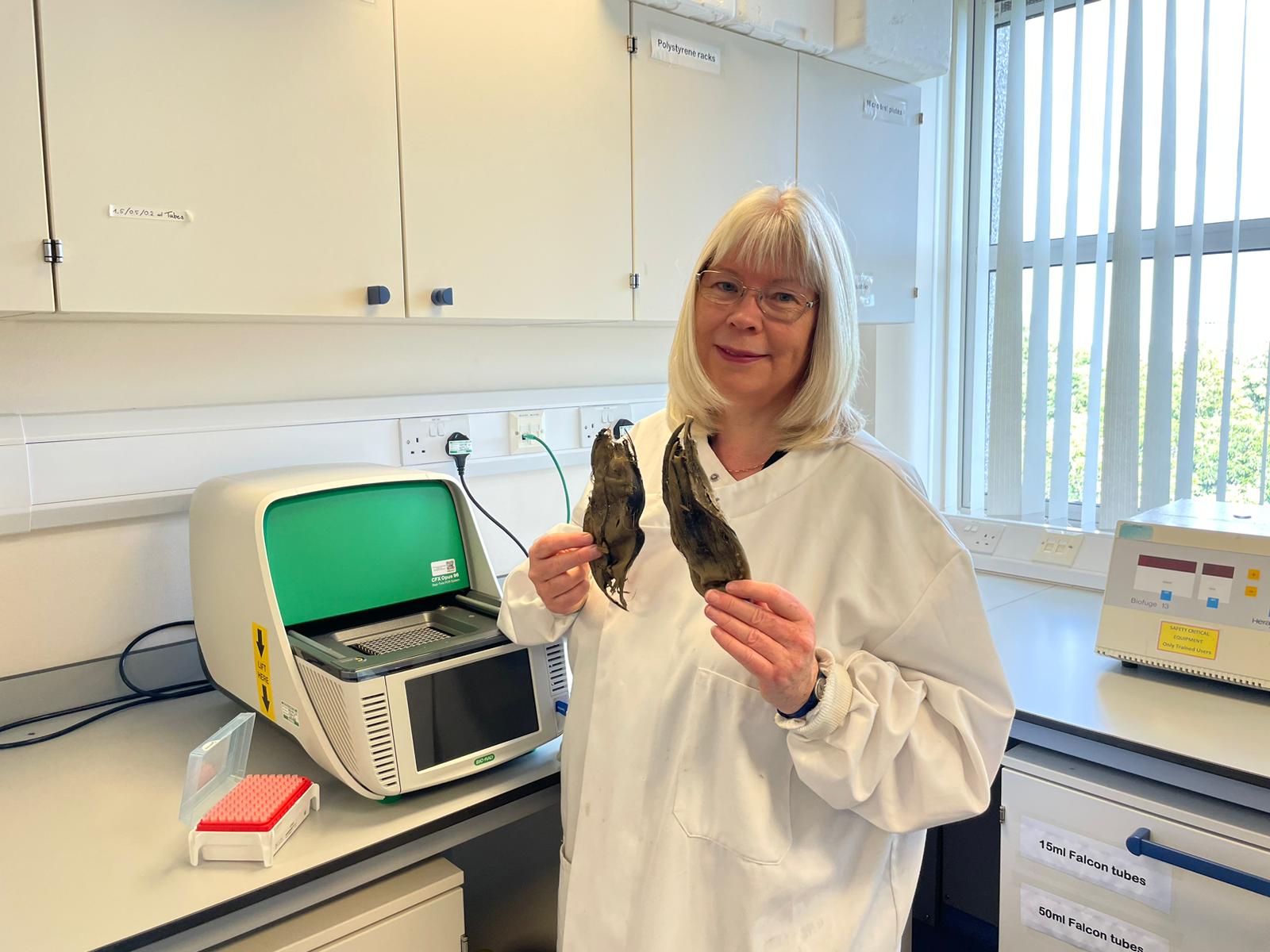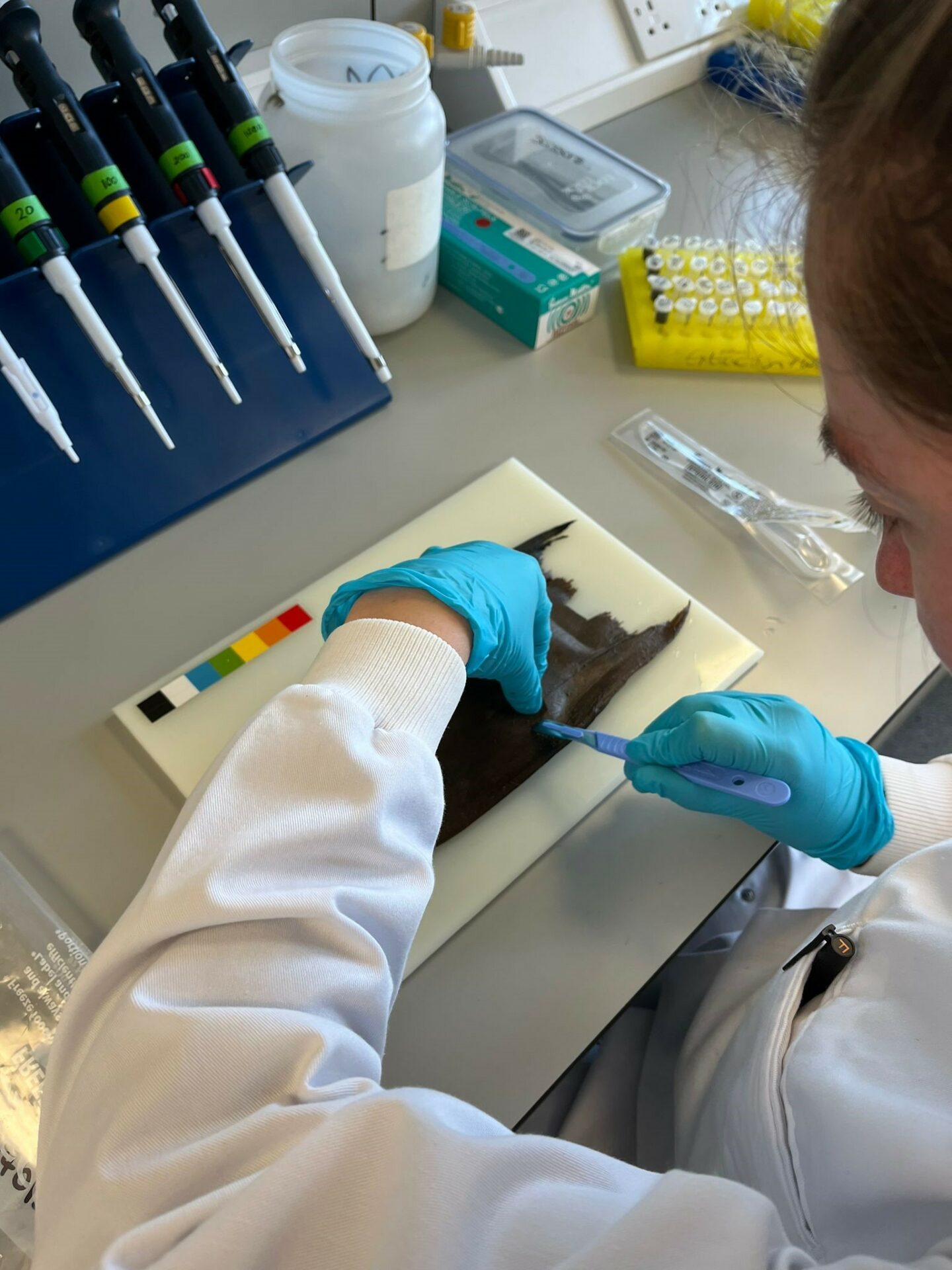Mermaid’s purses – a valuable genetic resource for flapper skate conservation?
The critically endangered flapper skate is the largest species of skate globally. Historically their large size made them targets for commercial fisheries, as well as making them vulnerable to bycatch by being more easily caught in fishing gear. The good news is flapper skate are no longer targeted, and it is illegal to land those caught as bycatch since 2009. The species have begun to show signs of recovery, with significant numbers found primarily in Scottish waters. A marine protected area (MPA) the ‘Loch Sunart to the Sound of Jura Nature Conservation MPA’ was established on the west coast of Scotland in 2015 to aid conservation efforts. This site was selected due to the high density and residency of flapper skate including large mature females found there. Yet the flapper skate has another vulnerable life stage – the egg case.
Flapper skate are oviparous, laying eggs with a toughened, leather-like, outer casing called ‘mermaid’s purses’. Flapper skate ‘purses’ are the largest of all Chondrichthyan eggs and are rectangular with a capsule measuring between 10–14cm wide and 13–23cm long, with four short horns. Flapper skate egg cases are laid by the adult female on the seafloor and remain sessile with the young embryo developing from the egg within the case. The baby skate (sized about 28cm) then hatches out of the purse, and swims away, leaving the discarded egg case behind which often wash ashore. Could these large stranded empty egg cases be a valuable genetic resource to find out more about flapper skate reproduction?

Cath Jones with spent flapper skate egg cases as a potential source of genomic DNA. Photo © Cath Jones
Where egg cases containing live embryos are found in high densities these localities are designated as nurseries. Recently the first flapper skate egg nursery in the world was identified at ‘Red Rocks’ in the Inner Sound of the Isle of Skye, west Scotland. This site was permanently designated as an MPA in 2023 (Red Rocks and Longay MPA), with all human activities prohibited to protect the vulnerable egg cases and allow successful hatching. To allow effective management of this nursery much more information is needed regarding its use by egg-laying females. Obtaining genetic data from egg cases with live embryos could reveal how many mothers use the site and how often. Can we obtain DNA from biopsied live egg cases?
Our aim was to test different DNA extraction, purification and PCR methodologies for obtaining and amplifying both nuclear and maternally inherited mitochondrial DNA from both live biopsied material and from spent skate egg cases, optimising these methods as needed.

Dissection of a flapper skate egg case by Fenella Wood (PhD student) to obtain sections for DNA extraction. Photo © Fenella Wood
We have several challenges to overcome to obtain useable DNA from egg cases. First, egg cases are made up of a latticework of collagen, therefore, egg cases are not made of living cellular based tissue containing mitochondria and nuclei, consequently obtaining DNA from these structures would seem tricky. Yet these eggs are formed within the oviduct, thus the mother’s cells could become entangled within the lattice forming the egg case, perhaps allowing some DNA to be extracted from these structures. Another important consideration is that collagen is a PCR inhibitor which may impact the successful amplification of the hard-earned extracted genomic DNA. Also, we need to consider the possible degraded state of the egg case DNA. Incubation of an egg case takes a whooping 18 months in the flapper skate! This means that any cells or free DNA from the mother within the egg case structure will have been outside of her body for the entire incubation time. Are samples obtained during incubation less degraded than from spent eggs? Finally, what about DNA contamination risks from other species? During incubation flapper skate egg cases are open (via the horns) to the external sea water, with the embryo beating its tail to promote water exchange. Consequently, it is possible that genetic material from other organisms could be present on the external or internal layers of the egg cases. Potential contamination risks need to be considered when utilising DNA from egg case material to ensure that the targeted DNA is actually from the flapper skate.
So can DNA be extracted, amplified and sequenced (both mitochondrial and nuclear) from flapper skate egg cases? We shall see…
